Creating your own DIY sauna can significantly enhance your wellness routine, providing both relaxation and health benefits right at home. Building a sauna is not only a rewarding project but also a way to enjoy the calming effects of heat therapy, which can improve circulation and promote muscle relaxation. Whether you seek solace after a long day or a place to unwind with loved ones, a DIY sauna serves as a perfect retreat.
In this blog post, you will learn the essential steps for constructing your own sauna, from design concepts to the actual building process. You will discover key considerations, material choices, and tips for ensuring your sauna is both functional and enjoyable.
By the end of this article, you will have a clear roadmap for embarking on your DIY sauna project, empowering you to create a space that fits your lifestyle and wellness goals.
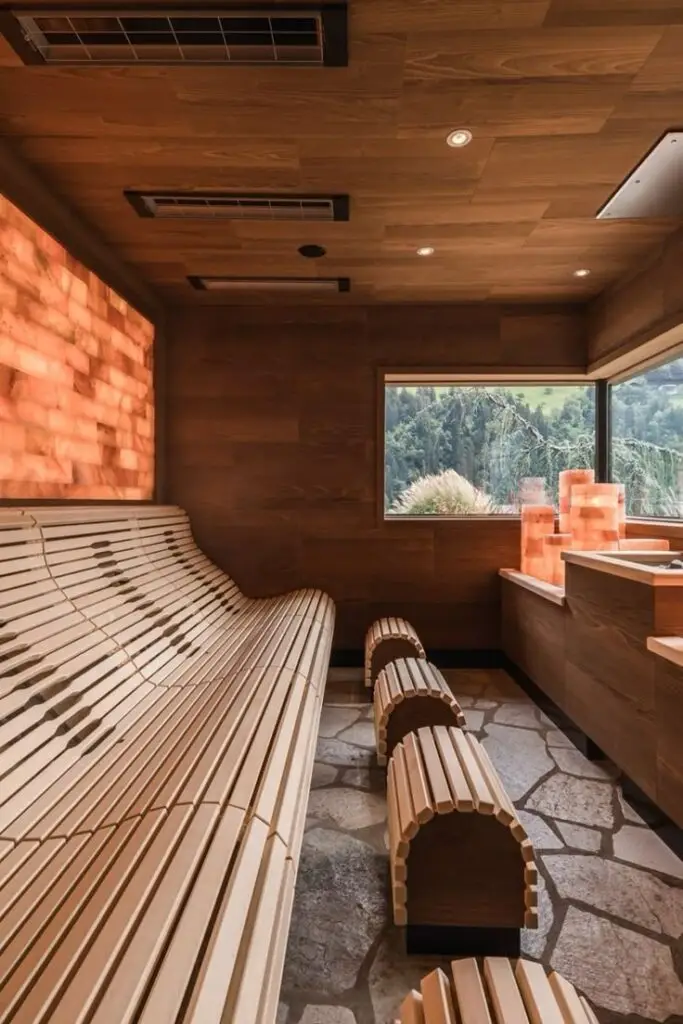
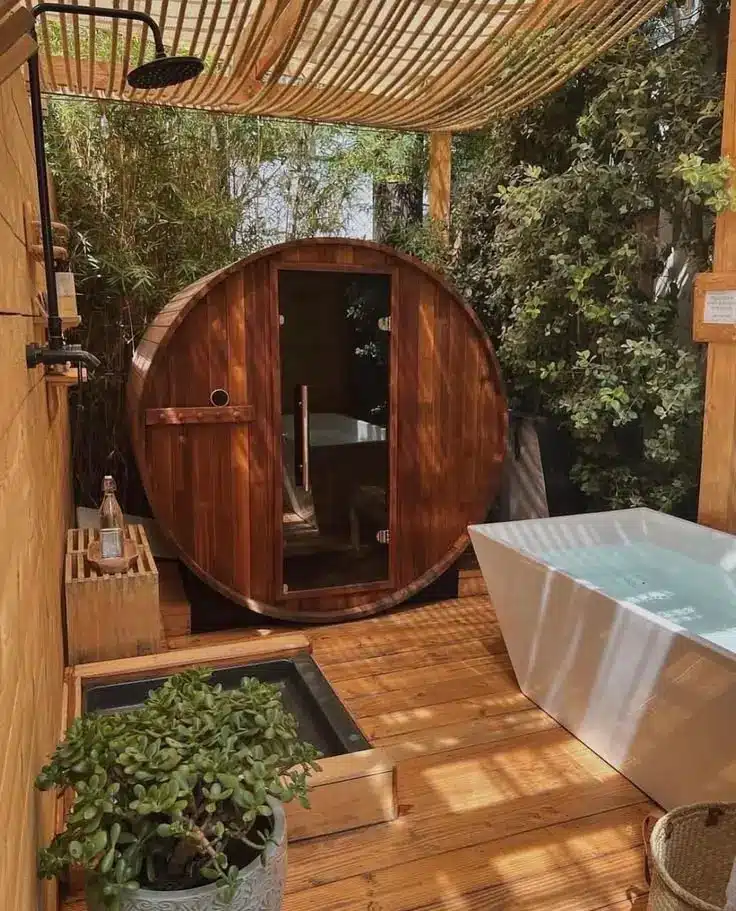
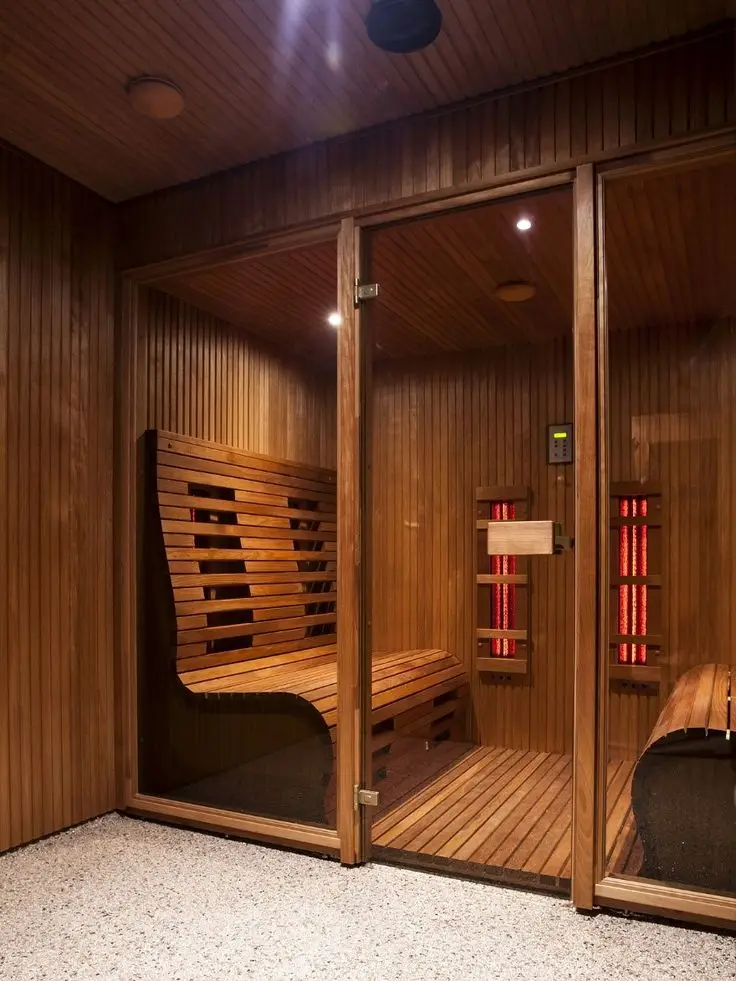
Key Takeaways
- DIY saunas provide health benefits, including relaxation and improved circulation.
- Proper planning and design are crucial for an effective sauna build.
- Choosing the right materials can enhance the sauna experience and longevity.
Understanding the Basics of Sauna Construction
Building a sauna involves several key considerations. You need to determine what type of sauna fits your needs, select high-quality materials, and ensure proper insulation and vapor barriers.
Types of Saunas
There are various types of saunas to consider. Traditional wood-burning saunas provide an authentic experience, utilizing wood stoves for heat. Electric saunas are convenient and easy to control, making them a popular choice for indoor use. If you’re looking for something unique, cordwood masonry saunas use stacked logs for heating and can be aesthetically pleasing.
When choosing, think about your space and preferences. Indoor saunas are excellent for home use, while outdoor options suit larger areas. You might also consider dry saunas for intense heat or steam rooms for a more humid environment.
Selecting the Right Materials
Choosing the right materials is crucial for durability and comfort. Cedar is a top choice due to its resistance to moisture and pleasant aroma. Other popular options include poplar and basswood, both of which are affordable and provide good thermal properties.
Make sure to use quality wood for the interior, as softer woods can warp over time. For the frame, consider using treated lumber to withstand humidity. It’s essential to consult detailed sauna plans to ensure all dimensions and materials fit your design.
Insulation and Vapor Barriers
Proper insulation and vapor barriers are vital for efficiency. Use materials specifically designed for saunas to ensure heat retention. Fiberglass insulation or similar materials work well, while reflecting barriers like foil can help prevent moisture buildup.
Install the vapor barrier between the insulation and the wall panels. This helps protect the structure from moisture damage. Ensure all seams are tightly sealed to avoid leaks. A well-insulated sauna will maintain consistent temperatures for a more enjoyable experience.
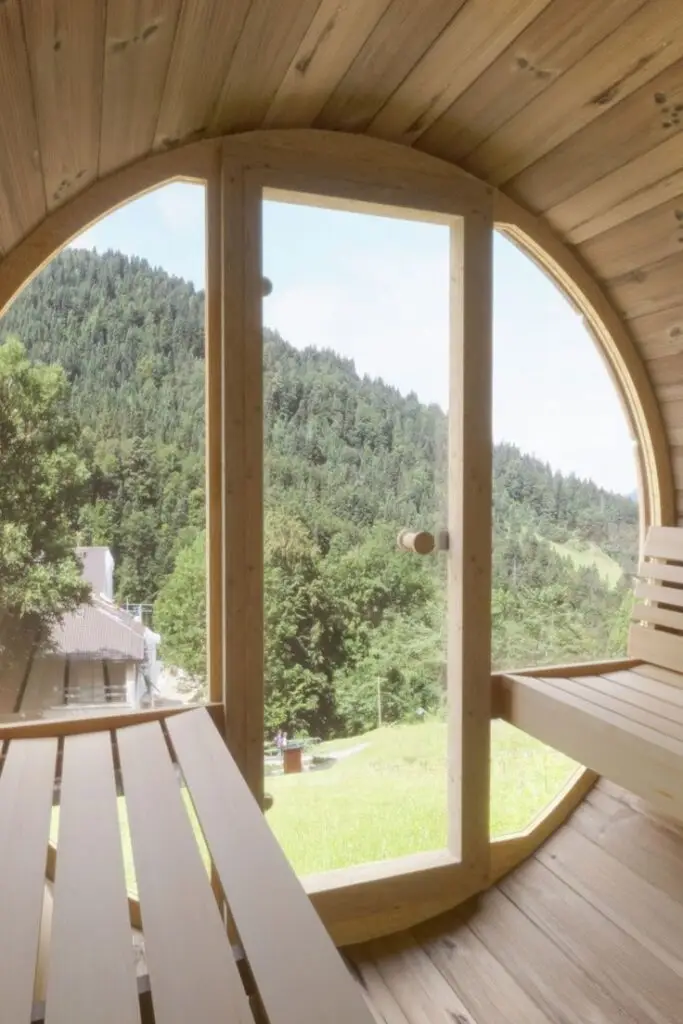
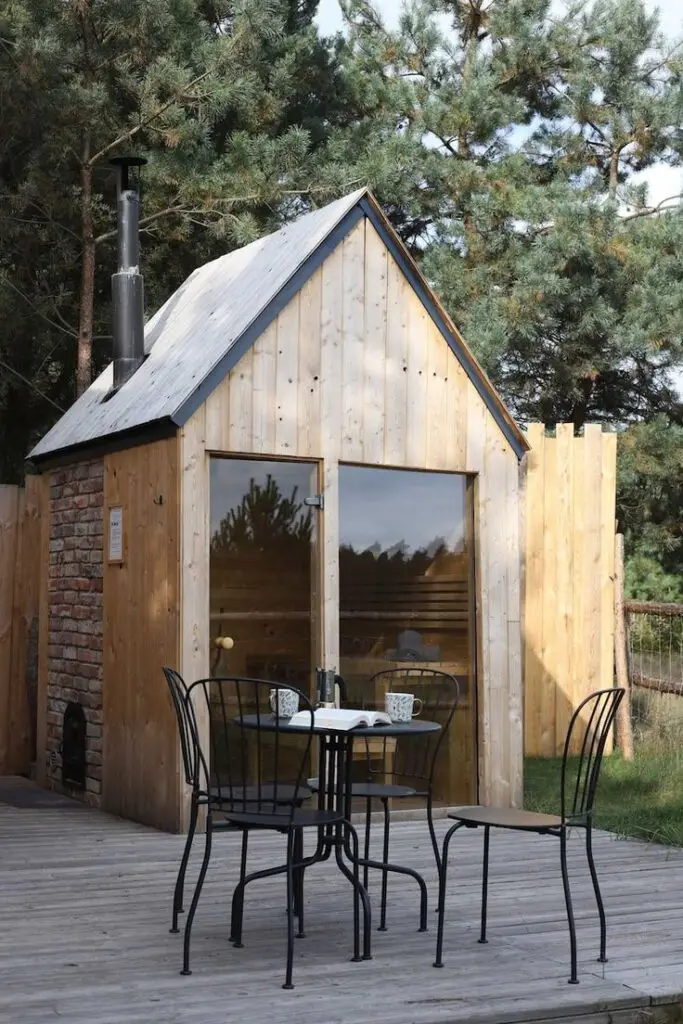

Designing Your DIY Sauna
Creating a DIY sauna involves careful planning to ensure functionality and comfort. This includes developing a building plan, selecting the appropriate heating system, and determining the dimensions and layout that suit your needs.
Creating a Building Plan
Start by outlining your project scope. Determine whether your sauna will be indoor or outdoor. Consider local building codes and zoning regulations that may affect your design.
Draft a detailed blueprint of your sauna. Include specific measurements and materials needed. Popular materials for a sauna include cedar or spruce for their durability and resistance to moisture.
Factor in ventilation to ensure a fresh air supply. This will enhance your sauna experience while preventing structural damage. Create a timeline for construction to keep your project on track.
Heating System Options
Your choice of heating system significantly impacts your sauna experience. Options include electric sauna heaters, wood-burning stoves, and infrared heating panels.
Electric heaters offer convenience, quick heating, and temperature control. They are ideal for indoor saunas and require a proper electrical setup.
Wood-burning saunas provide a traditional ambiance and can be utilized outdoors. They need more maintenance, as you must regularly supply firewood and ensure proper ventilation.
Infrared heating offers efficient heating with lower energy consumption. These heaters penetrate deeper into the body, providing relaxation benefits without raising air temperature significantly. If you’ve ever wondered why am I not sweating while I am in the sauna, factors like hydration, room temperature, or individual physiology could be at play.
Dimensions and Layout
Dimensions largely depend on available space and your intended capacity. An average sauna size can range from 4’x6’ for a small sauna to 8’x12’ or larger for a family sauna.
For optimal comfort, allow about 2 to 3 square feet per person. Ensure there’s enough room for a bench and a heater setup.
Layout should focus on accessibility and functionality. Position your heater away from the entrance to maintain safety. Consider adding a reclining bench for comfort and ample headspace for standing. Good layout planning enhances your overall sauna experience.
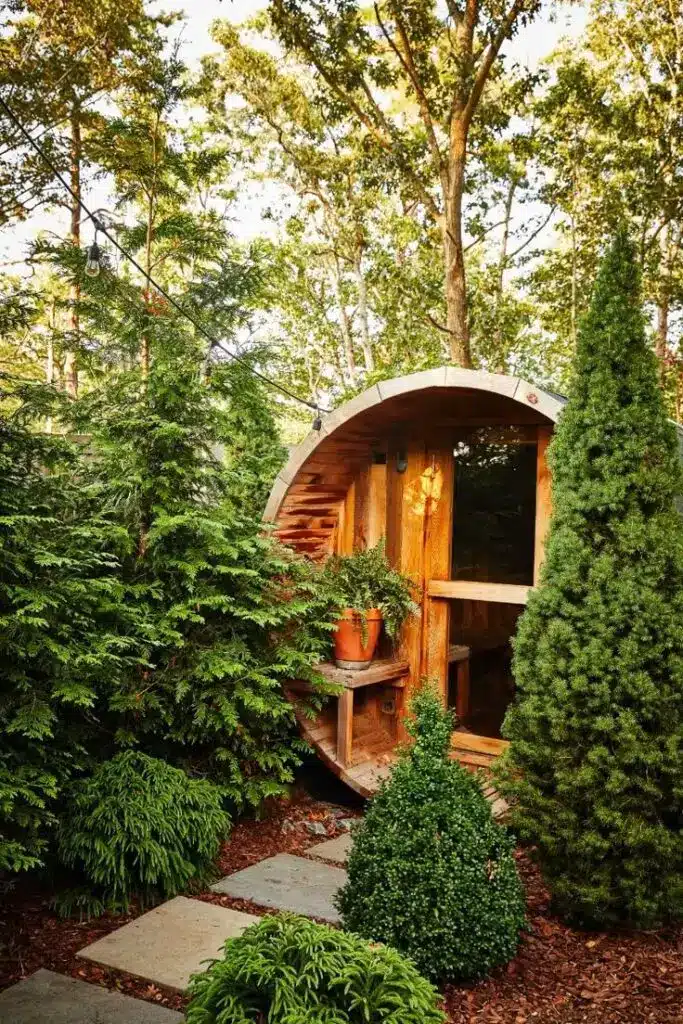

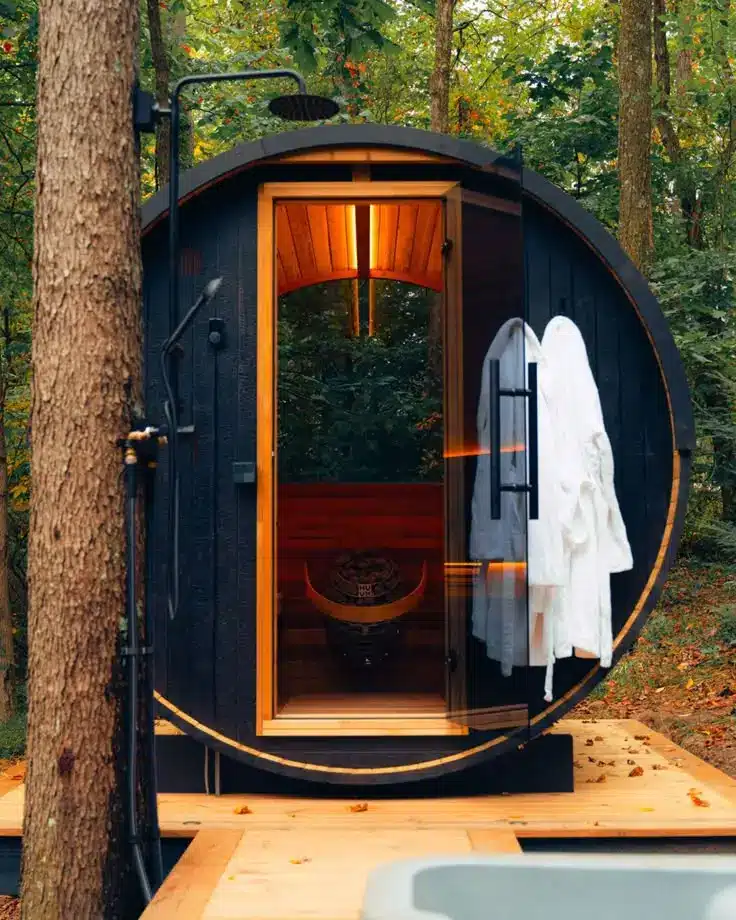
The DIY Build Process
Creating your own sauna involves meticulous planning and execution. Focus on the construction aspects, insulation needs, and the choice of wood to ensure a functional and long-lasting home sauna.
Foundation and Frame Construction
Begin by selecting a suitable location for your sauna, ensuring it is level and has access to power and water if needed. Lay a solid foundation using concrete blocks or a wooden platform. This step is critical to support the weight of the structure and to prevent moisture issues.
Build your sauna’s frame using durable lumber, such as treated pine or cedar, which is resistant to decay. Construct the inner frame with sufficient cross-bracing to enhance stability. Secure the walls with studs spaced 16 inches apart, ensuring they are square and level. The overall frame design should facilitate easy installation of insulation.
Installing Insulation and Vapor Barrier
For optimal heat retention, use foam insulation to line the walls and ceiling of your sauna. Two inches of foam board is ideal for providing a thermal barrier, reducing heat loss. Cut the insulation to fit snugly between the studs, leaving no gaps.
Following insulation, install a vapor barrier using a heavy-duty polyethylene sheet. This should cover all walls and the ceiling, protecting the structure from moisture penetration. Tape all seams of the vapor barrier securely to prevent any leaks. This step is vital for maintaining the sauna’s efficiency and longevity.
Finishing with the Right Wood
Choose cedar wood for the interior lining due to its natural resistance to moisture and pleasant aroma. Cedar also has excellent insulating properties, enhancing the sauna’s efficiency. Select tongue-and-groove cedar boards for a smooth finish and easy installation.
Secure the cedar boards to the inner frame, ensuring they fit tightly. Consider finishing with a protective sealant or oil to preserve the wood while extending its life. Take care to leave gaps for ventilation, which is critical for a wood-burning sauna to function properly. Proper finishing will not only enhance aesthetic appeal but also contribute to a comfortable sauna experience.


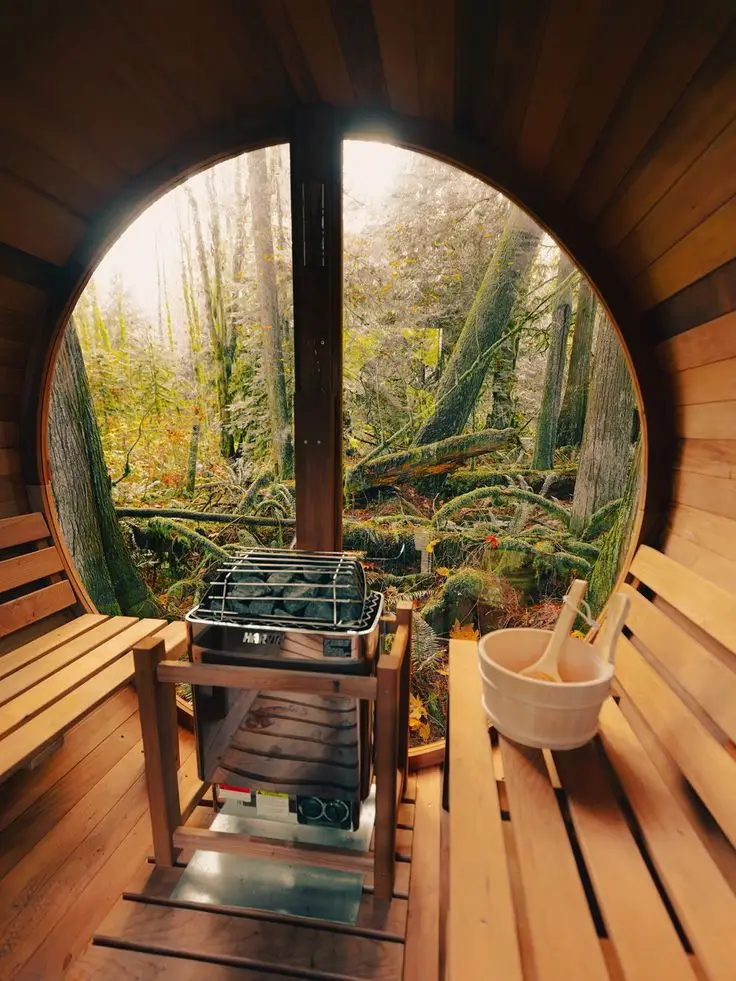
Additional Considerations for a Home Sauna
When planning your home sauna, there are key factors to consider, including the location, additional wellness features, and the necessary maintenance. Each of these elements will enhance your sauna experience.
Choosing Between Indoor and Outdoor Saunas
Deciding whether to install an indoor or outdoor sauna depends on your space and usage preferences.
Indoor saunas can save space and allow for year-round use. They integrate well with home aesthetics but require adequate ventilation and moisture control.
Outdoor saunas provide a more immersive experience in nature, enhancing relaxation. They typically require more space and potentially additional plumbing for water access. Choose materials suited for outdoor conditions to ensure longevity. Evaluate zoning laws and any necessary permits for outdoor installations.
Incorporating Wellness and Relaxation Features
Enhancing your sauna with wellness features can maximize its benefits. Consider adding aromatherapy diffusers to promote relaxation and support detoxification. Use essential oils like eucalyptus or lavender for their soothing properties.
Incorporating mood lighting can create a calming atmosphere. LED lights with adjustable brightness may improve your experience.
You might also integrate sound systems for soothing music or guided meditations, further enhancing your relaxation. Remember to focus on features that promote both mental and physical well-being.
Maintenance and Upkeep
Regular maintenance is essential for the longevity of your sauna. For indoor saunas, check for moisture and ventilation issues. Inspect seals and fittings to prevent damage from humidity, which could lead to mold growth.
For outdoor saunas, ensure that the exterior is treated for weather resistance. Regularly inspect the wood for signs of deterioration.
Cleaning the sauna is crucial. Use only mild, natural cleaners to avoid damaging the wood. Routinely check the heating elements and electrical systems for safety. Plan yearly maintenance checks for any plumbing and electrical work associated with your sauna setup.
- 147shares
- Facebook0
- Pinterest147
- Twitter0


